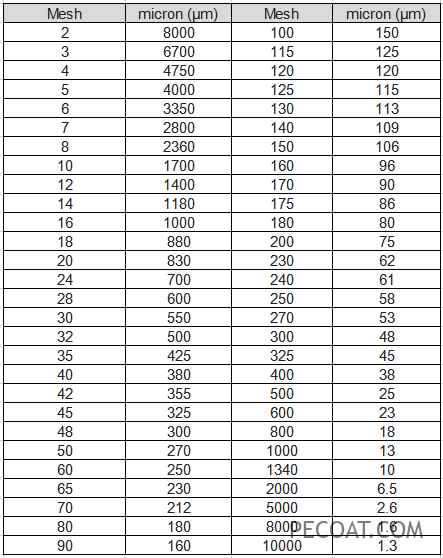Relationship Between Mesh and Microns

Powder industry personnel often use the term “mesh size” to describe particle size. So, what is mesh size and how is it related to microns?
Mesh size refers to the number of holes in a sieve, which is the number of holes per square inch. The higher the mesh size, the smaller the hole size. Generally, mesh size multiplied by hole size (in microns) ≈ 15000. For example, a 400-mesh sieve has a hole size of about 38 microns, and a 500-mesh sieve has a hole size of about 30 microns. Due to the issue of open area, which is due to the difference in thickness of the wire used when weaving the net, different countries have different standards. There are currently three standards: American, British, and Japanese, with the British and American standards being similar and the Japanese standard being different. The American standard is generally used, and the formula given above can be used to calculate it.
It can be seen that the size of the mesh determines the size of the sieve hole, and the size of the sieve hole determines the maximum particle size Dmax of the powder passing through the sieve. Therefore, it is inappropriate to use mesh size to determine the particle size of the powder. The correct approach is to use particle size (D10, median diameter D50, D90) to represent the particle size and to use standard terminology to avoid any discrepancies. It is also important to regularly calibrate equipment and instruments using standard powders.
National standards related to powder:
- GBT 29526-2013 Terminology for Powder Technology
- GBT 29527-2013 Graphic Symbols for Powder Processing Equipment


I think this is one of the most significant information for me. And i’m glad reading your article. But should remark on some general things, The site style is wonderful, the articles is really great : D. Good job, cheers